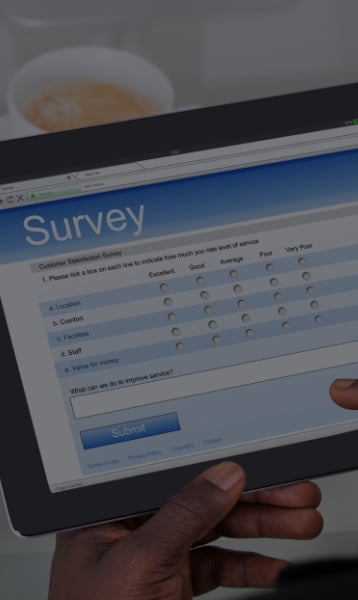This interactive portal improves the analytic experience so you can easily interact with data.
Shifting employees to public exchanges could redefine employer healthcare
Integrated Benefits Institute
A recent research report by S&P Capital IQ Global Markets Intelligence (GMI) details how, under the Affordable Care Act, U.S. companies with 50 or more workers could realize a savings of $3.25 trillion through 2025 by redefining the traditional role they play in the healthcare system and moving employees to the public health exchanges.
Under the ACA, companies with 50 or more employees must offer healthcare coverage or pay a tax. The GMI report calculates the cost savings for companies that opt to do this and transfer healthcare responsibility to their employees.
According to the report, the ACA may eventually come to be historically recognized as the starting point of the reconstruction of the U.S. health care benefit industry and a catalyst for how companies provide health care insurance for their employees. It compares the change to employers’ redefining employee retirement benefit policies decades ago as workers assumed more responsibility for these accounts.
Further, the report argues that the transformation would have drawbacks as workers lose coverage through group plans and their premium costs rise if they don’t qualify for subsidies. And, importantly, companies that do not provide healthcare to employees would be at a competitive disadvantage in recruitment and retention of talent to businesses that do.
But there is downside risk to the overall health and productivity of their workforces.
What some proponents of removing employers from the healthcare system fail to fully understand is the impact of employee health on employer business performance. Furthermore, they do not comprehend that employers provide a setting within which employee health can be supported.
Employers should carefully consider whether to exit the healthcare system because of the impact of employee health on productivity, and the impact of productivity on their performance. There is a critical difference between employers’ decisions about financing health care and their choices about managing workforce health and its business-performance outcomes.
Since the passage of the ACA, there are two employer camps forming around the issue of employer-provided healthcare coverage. One camp is focused on minimizing healthcare costs in the short run. The other camp is thinking strategically about how to use data about employee health to achieve desired business outcomes.
Even if employers send their employees to exchanges, the value of connecting health, performance, attendance and other work-related information remains. At the IBI, we think focusing on the fluctuation in health care costs over time can be misleading. What is more important is connecting changes in employee health and investments made in maintaining employee health with broader work outcomes that matter to both the employer’s business value and the employee’s quality of life.
While employers choosing to send their employees to the public exchanges may save on the cost of maintaining medical insurance for their employees, they stand to lose an important (if not essential) key to effectively managing employee health, which directly impacts both their bottom and top lines—costs and productivity/performance.
Decades of providing health coverage to employees has enabled companies to amass huge amounts of health data. This data includes lost work time due to illness, relationships between certain lifestyle habits/choices and work, the effects of obesity on long-term productivity, and more.
Direct investment in health care coverage, while only one among many investments an employer can make, provides an opportunity for employers to obtain aggregate employee health information that can be tied to key business metrics, and as such, is an important investment. Working through supplier partners, having employee health data integrated with work-related outcomes, such as attendance, performance and business results can help employers better understand the connection between various health investments and results that benefit both employees and employers. The overriding question employers should be asking is, what is the overall return on our healthcare investment in our workforce.
Employers must appreciate the full value of a healthy workforce. Healthy employees come to work more often and do a better job; healthy employees are good for business. Employers that don’t understand this, and are only focused on short-term cost savings, are risking their business.
Companies need to think beyond cost savings into tying healthcare investments back to the larger impact on business outcomes related to the health and productivity of their workforces. Integrating health and related benefits can help support a healthier and better-performing workforce, which ultimately maximizes the efficacy of their human capital.
Thomas Parry is president of the Integrated Benefits Institute (IBI), an independent nonprofit membership organization and the leading provider of health and productivity research, measurement and benchmarking.
Philadelphia-area members include Comcast and the Greater Philadelphia Business Coalition on Health.
Article original posted in Philadelphia Business Journal.
- February 2025 (1)
- December 2024 (2)
- March 2024 (1)
- January 2024 (1)
- October 2023 (3)
- September 2023 (1)
- July 2023 (1)
- May 2023 (1)
- April 2023 (1)
- February 2023 (1)
- January 2023 (1)
- December 2022 (1)
- November 2022 (1)
- October 2022 (1)
- September 2022 (1)
- August 2022 (2)
- July 2022 (1)
- June 2022 (3)
- May 2022 (2)
- April 2022 (1)
- March 2022 (2)
- February 2022 (1)
- January 2022 (1)
- December 2021 (1)
- November 2021 (1)
- October 2021 (1)
- August 2021 (1)
- July 2021 (2)
- June 2021 (1)
- May 2021 (1)
- April 2021 (1)
- February 2021 (1)
- January 2021 (3)
- August 2020 (1)
- July 2020 (3)
- May 2020 (1)
- April 2020 (4)
- March 2020 (4)
- February 2020 (1)
- January 2020 (1)
- November 2019 (2)
- July 2019 (4)
- June 2019 (3)
- May 2019 (2)
- April 2019 (2)
- March 2019 (3)
- February 2019 (7)
- January 2019 (9)
- November 2018 (6)
- October 2018 (3)
- September 2018 (3)
- August 2018 (2)
- July 2018 (4)
- March 2018 (22)
- February 2018 (1)
- October 2017 (1)
- September 2017 (1)
- August 2017 (1)
- July 2017 (1)
- June 2017 (3)
- May 2017 (2)
- April 2017 (1)
- March 2017 (29)
- February 2017 (1)
- January 2017 (1)
- December 2016 (3)
- November 2016 (2)
- October 2016 (1)
- August 2016 (3)
- May 2016 (2)
- April 2016 (8)
- February 2016 (29)
- January 2016 (1)
- December 2015 (2)
- July 2015 (4)
- June 2015 (6)
- May 2015 (1)
- April 2015 (1)
- March 2015 (22)
- February 2015 (1)
- January 2015 (1)
- December 2014 (1)
- November 2014 (1)
- October 2014 (2)
- September 2014 (1)
- August 2014 (3)
- July 2014 (2)
- June 2014 (1)
- May 2014 (2)
- April 2014 (4)
- March 2014 (8)
- February 2014 (1)
- January 2014 (1)
- December 2013 (2)
- November 2013 (2)
- October 2013 (4)
- August 2013 (1)
- July 2013 (3)
- May 2013 (13)
- March 2013 (2)
- February 2013 (9)
- January 2013 (1)
- December 2012 (1)
- November 2012 (1)
- June 2012 (1)
- May 2012 (1)
- April 2012 (1)
- August 2011 (1)
- June 2011 (3)
- May 2011 (1)
- April 2011 (2)
- March 2011 (1)
- February 2011 (2)
- November 2010 (1)
- October 2010 (1)
- June 2010 (1)
- March 2010 (1)
- January 2010 (2)
- October 2009 (1)
- July 2009 (1)
- May 2009 (2)
- March 2009 (1)
- January 2009 (1)
- November 2008 (1)
- October 2008 (2)
- September 2008 (1)
- August 2008 (1)
- June 2008 (1)
- May 2008 (1)
- April 2008 (2)
- March 2008 (1)
- February 2008 (1)
- January 2008 (2)
- December 2007 (1)
- November 2007 (1)
- October 2007 (1)
- September 2007 (1)
- August 2007 (1)
- July 2007 (1)
- June 2007 (1)
- May 2007 (2)
- March 2007 (1)
- February 2007 (1)
- January 2007 (1)
- August 2006 (1)
- June 2006 (1)
- March 2006 (1)
- May 2005 (1)
- July 2004 (1)
- 2019 (1)
- 2020 (1)
- Absence (2)
- Absence Management (4)
- Article (105)
- Behavioral Health (2)
- Benchmarking (9)
- Benefit Design (11)
- Benefits + Plan Design (26)
- Blog (72)
- Burnout (1)
- Business Performance (2)
- Business Value of Health (21)
- Cancer (3)
- Cardiovascular Disease (4)
- Care Management (1)
- Care Quality (1)
- Caregiving (3)
- Case Studies (7)
- Chronic Conditions (2)
- Communicating H&P to Business Leaders (1)
- Community Health (2)
- Comparative Effectiveness Research (1)
- Connecting HR to Operations (1)
- COVID-19 (13)
- Culture of Health (1)
- Culture of Health + Safety (29)
- Data (1)
- Data Driven Decision Making (1)
- Depression (5)
- Diabetes (5)
- Disability Leave (41)
- Disease Burden (1)
- Employer Perspectives (5)
- Engage Employees (45)
- Event Recap (2)
- Exchanges (4)
- Family + Parental Leave (8)
- FMLA (2)
- Headache (1)
- Health + Productivity Management (54)
- Health Inequities (1)
- Healthcare (2)
- Healthcare Costs (17)
- HPM Survey (3)
- IBI Agenda (2)
- IBI Presents (9)
- immunization (1)
- Industry Profile (1)
- Integrating Health Data (12)
- Invest In Health (52)
- Leave Benchmark Survey (1)
- Linking Health to Business Performance (1)
- Make The Business Case (54)
- Manage Absence (70)
- Market Perspectives (29)
- Maternity (1)
- Measurement (2)
- Measuring Outcomes (21)
- Medication Adherence (1)
- Mental + Emotional Health (16)
- Mental Health (7)
- Migraine (2)
- MSD (1)
- MSK (1)
- Multi-Study Spotlight (23)
- Musc (1)
- Musculoskeletal Disorders (12)
- National Forum (1)
- Obesity (2)
- Occupation (1)
- Online Events (17)
- Pain Management (1)
- Patient Resources (1)
- Patient-Centered (2)
- Pharmacy (5)
- Physical Activity (1)
- Popular and Timely (11)
- Practical Guidance (6)
- Pregnancy (1)
- Presenteeism (1)
- Presenteeism / Job Performance (3)
- Preventive Care (1)
- Previous Forums (109)
- Productivity (46)
- Provider Quality (1)
- Regional Events (1)
- Research (22)
- Research Based Healthcare Evidence (1)
- Research Report (2)
- Research Review (3)
- Return to Work (19)
- Risk Management (11)
- SAW / RTW (1)
- Scholarly Work (2)
- Short-Term Disability (2)
- Sick Leave (15)
- Social Determinants of Health (1)
- Stay at Work (1)
- Stay-at-work / Return-to-work (1)
- STD (2)
- Strategies (1)
- Stress (2)
- Suicide (2)
- Surveys (3)
- Talking to Leadership (4)
- Telehealth (3)
- Understand Health Risks (34)
- Value-based Benefit Design (1)
- Vendor Integration (1)
- Video (3)
- virtual care (1)
- virtual health (1)
- Weight Control (5)
- Well-being (16)
- Wellness + Lifestyle (17)
- Working Remotely (4)
- Workplace Culture of Health (2)
- Workplace Health Programs (1)
- Admin
- Brian Gifford
- Brian Gifford Ph.D. Director, Research and Analytics, IBI
- Candace Nelson
- Carole Bonner
- Carolyn Ho
- Carolyn Ho, IBI Communications Lead
- Erin Peterson
- Erin Peterson, Researcher
- Gia Harris
- IBI
- IBI Member
- IBI Research Team
- Integrated Benefits Institute
- Jennifer Santisi
- Jim Huffman
- Kelly McDevitt, IBI President
- Marshall Riddle
- Nicole Nicksic, PhD, MPH Research Lead
- Sera-Leigh Ghouralal
- Thomas Parry, PhD Senior Advisor, Integrated Benefits Institute























.jpg?width=500&name=Integrated-Benefits-Institute-San-Francisco-CA%20(1).jpg)


.png?width=900&name=Copy%20of%202024%20Research%20Priorities%20Banner(5).png)

